To capture stunning aerial dolly zoom drone shots, start by mastering your flight controls and practicing basic maneuvers. Choose ideal camera settings, including manual mode, fast shutter speed, and low ISO. Plan your subject placement carefully, positioning it to occupy 20-30% of the frame. Coordinate your zoom and movement, adjusting the zoom in the opposite direction of drone motion. Finally, practice timing and execution, starting with slow movements and gradually increasing speed. Remember to review your footage after each flight to identify areas for improvement. By following these tips, you'll be well on your way to creating enchanting aerial footage that will leave your audience in awe.
Key Takeaways
- Master drone controls and practice basic maneuvers before attempting dolly zoom shots.
- Set camera to manual mode with fast shutter speed, low ISO, and appropriate aperture.
- Choose distinct subjects and position them to occupy 20-30% of the frame.
- Coordinate smooth forward/backward drone movement with opposite direction camera zoom.
- Start with slow movements and gradually increase speed, reviewing footage to improve technique.
Master Flight Controls
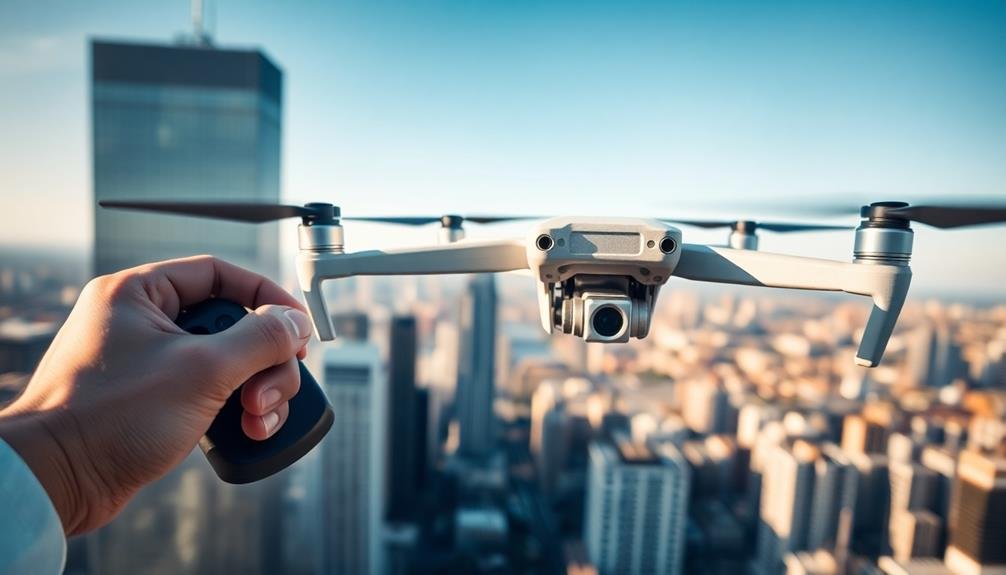
Precision is key when mastering flight controls for aerial dolly zoom shots. You'll need to develop a deep understanding of your drone's controls and capabilities. Start by practicing basic maneuvers in an open area, focusing on smooth, controlled movements.
Master hovering, ascending, descending, and lateral movements before attempting more complex techniques.
For dolly zoom shots, you'll need to combine forward or backward movement with simultaneous zooming. This requires precise coordination between your flight controls and camera settings. Practice flying at a consistent speed while adjusting your zoom smoothly.
Pay attention to your drone's altitude and heading, maintaining them steady throughout the shot.
Use your drone's intelligent flight modes, such as tracking or waypoints, to achieve more consistent results. These features can help you maintain a steady flight path while you focus on camera control.
Don't forget to adjust your drone's sensitivity settings to match your skill level and shooting requirements.
Lastly, always be aware of your surroundings and local regulations. Safety should be your top priority when flying, especially when attempting complex shots like the dolly zoom.
Choose Optimal Camera Settings
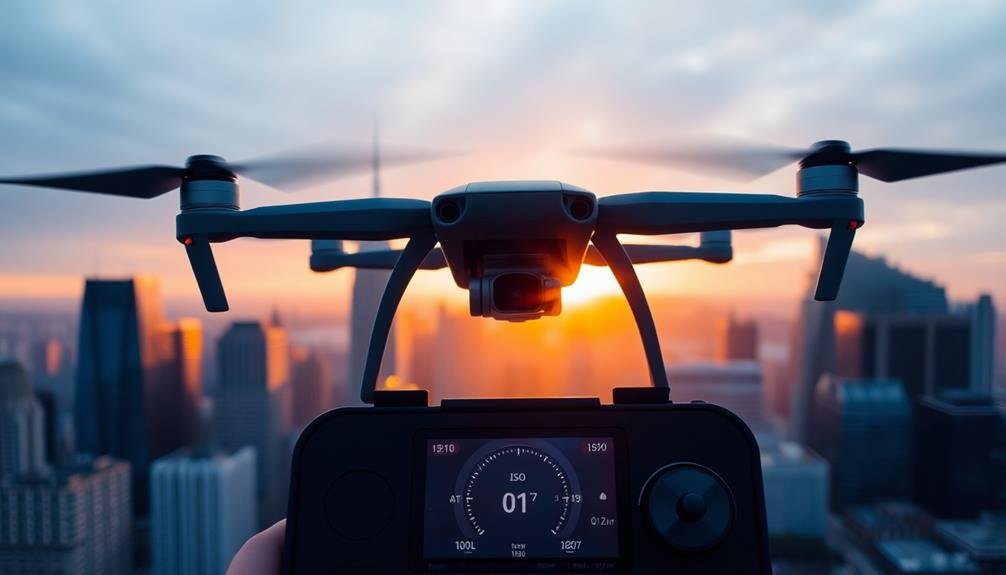
To capture stunning aerial dolly zoom shots, selecting the right camera settings is essential. Start by setting your camera to manual mode, giving you full control over exposure, shutter speed, and ISO.
Opt for a relatively fast shutter speed, around 1/250th to 1/500th of a second, to minimize motion blur. Keep your ISO as low as possible to reduce noise, ideally between 100-400.
Choose an aperture that provides a good depth of field, typically f/4 to f/8, depending on your lens and desired effect. Set your focus to infinity or use hyperfocal distance to guarantee sharpness throughout the frame.
Enable your camera's RAW format for maximum flexibility in post-processing.
For the dolly zoom effect, you'll need to adjust your focal length during the shot. Start with a wide-angle view and gradually zoom in as you fly backward, or vice versa.
Maintain a consistent speed and smooth movement throughout the shot. Use your drone's gimbal to keep the subject centered and level.
Experiment with different speeds and zoom rates to find the most dramatic effect for your scene. Remember to practice and fine-tune your settings to achieve the perfect aerial dolly zoom.
Plan Perfect Subject Placement
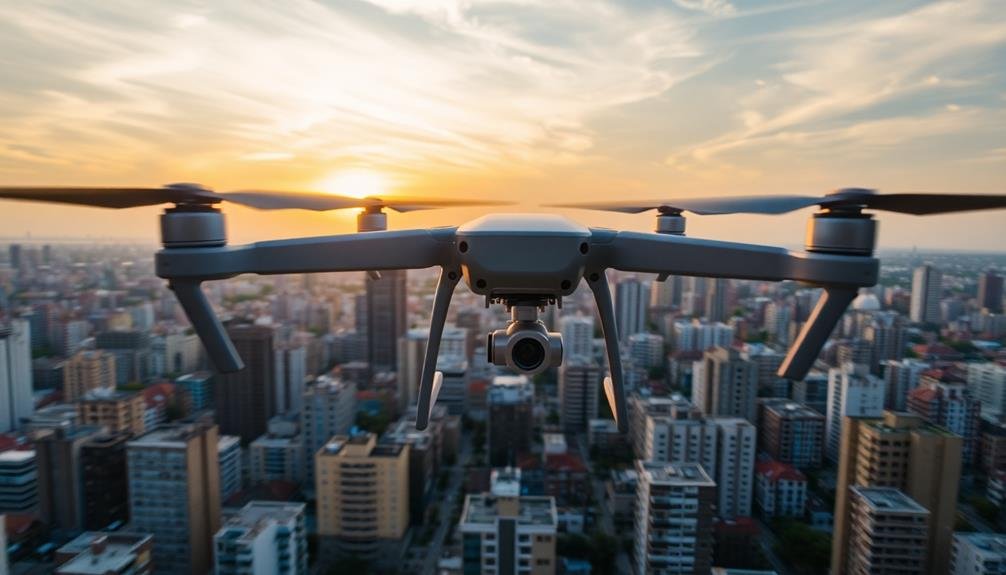
With your camera settings optimized, it's time to focus on subject placement for your aerial dolly zoom shots. The key to a powerful dolly zoom effect lies in carefully positioning your subject within the frame. Choose a subject that's distinct and eye-catching, such as a tall building, a lone tree, or a person standing on a scenic overlook.
Position your drone at a distance where the subject occupies roughly 20-30% of the frame. This allows ample room for the background to expand or contract during the zoom effect. As you execute the dolly zoom, maintain the subject's size in the frame by adjusting your drone's position and zoom simultaneously.
Consider these factors when planning subject placement:
- Background complexity: Verify the background has enough detail to showcase the warping effect
- Foreground elements: Include interesting foreground objects to enhance depth perception
- Leading lines: Utilize natural lines in the landscape to draw attention to your subject
- Rule of thirds: Place your subject off-center for a more dynamic composition
Coordinate Zoom and Movement

The heart of a successful aerial dolly zoom lies in seamlessly coordinating your drone's movement with the camera's zoom. As you fly towards or away from your subject, you'll need to adjust the zoom in the opposite direction at a consistent rate. This creates the illusion that the background is changing while the subject remains the same size.
Start by practicing your drone's forward or backward movement at a steady pace. Once you've mastered this, begin incorporating the zoom function. As you move forward, zoom out gradually; when flying backward, zoom in. The key is to maintain a constant rate for both movements.
Use your drone's intelligent flight modes, such as point of interest or waypoints, to guarantee smooth and predictable motion. These features allow you to focus on controlling the zoom while the drone follows a preset path.
Experiment with different speeds and zoom rates to find the perfect combination for your shot. Remember, slower movements often yield more dramatic results.
Don't be afraid to adjust your camera settings, such as shutter speed and aperture, to enhance the effect and maintain proper exposure throughout the zoom.
Practice Timing and Execution
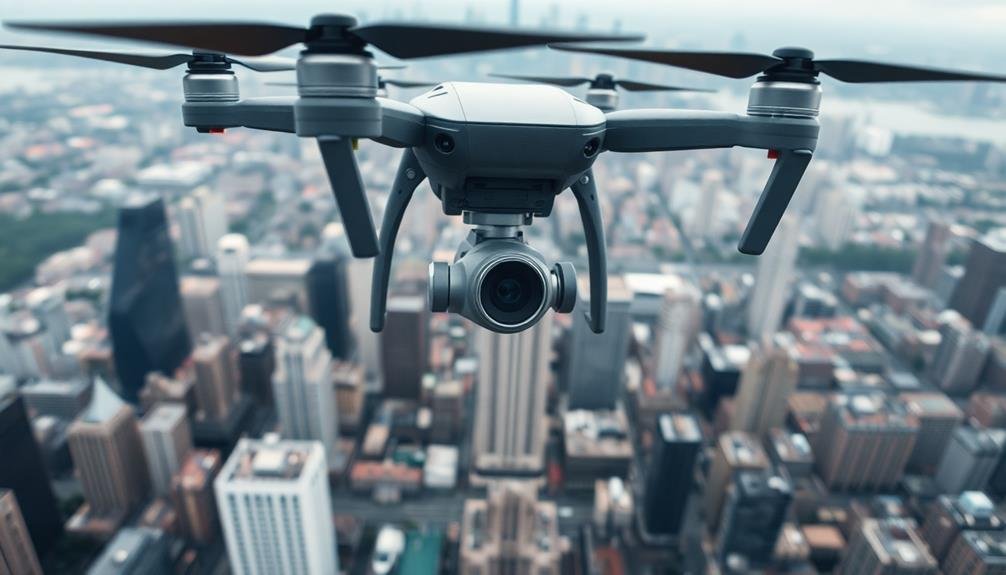
Mastering the aerial dolly zoom takes practice and patience. You'll need to hone your timing and execution skills to create that perfect vertigo effect. Start by practicing in an open area with minimal obstacles. Focus on maintaining a steady flight path while coordinating your drone's movement with the camera zoom.
To improve your timing and execution:
- Begin with slower movements and gradually increase speed
- Use visual markers to gauge your distance and positioning
- Experiment with different zoom speeds to find the ideal rate
- Practice reverse dolly zooms for added variety
As you become more comfortable, challenge yourself with more complex shots. Try incorporating foreground elements or flying around subjects. Remember, consistency is key. The smoother your drone's movement and zoom, the more impactful your dolly zoom effect will be.
Don't get discouraged if your first attempts aren't perfect. Review your footage after each flight, identifying areas for improvement. Pay attention to your drone's speed, zoom rate, and overall stability.
With time and persistence, you'll develop the muscle memory and instincts needed to execute stunning aerial dolly zoom shots consistently.
Frequently Asked Questions
What Drone Models Are Best for Executing Aerial Dolly Zoom Shots?
For aerial dolly zoom shots, you'll want to contemplate drones like DJI's Mavic 3, Air 2S, or Phantom 4 Pro. These models offer powerful cameras, stable flight, and programmable flight modes that'll help you nail those stunning dolly zoom effects.
How Does Wind Affect the Success of a Dolly Zoom Shot?
Wind can considerably impact your dolly zoom shot. It'll affect your drone's stability, making smooth movements challenging. You'll need to compensate for wind drift and adjust your speed. Strong gusts can even force you to abort the shot.
Are There Any Legal Restrictions for Capturing Aerial Dolly Zoom Footage?
You'll need to follow local drone regulations when capturing aerial dolly zoom footage. Check for no-fly zones, altitude limits, and required licenses. Don't forget to respect privacy laws and obtain necessary permissions for filming locations.
What Post-Processing Techniques Can Enhance Aerial Dolly Zoom Effects?
You'll enhance aerial dolly zoom effects by adjusting speed ramping, sharpening focus, and tweaking color grading. Don't forget to stabilize footage, add motion blur, and experiment with sound design to amplify the visual impact.
How Do You Maintain Focus on the Subject During a Dolly Zoom?
To maintain focus during a dolly zoom, you'll need to lock your camera on the subject. Use your drone's tracking feature or manually adjust as you move. Keep the subject centered and adjust zoom smoothly throughout the shot.
In Summary
You've now got the essential tools to create breathtaking aerial dolly zoom shots with your drone. Remember, it's all about mastering your flight controls, optimizing camera settings, placing your subject strategically, coordinating zoom and movement, and perfecting your timing. Don't be discouraged if your first attempts aren't perfect. Keep practicing, and you'll soon be capturing mind-bending footage that'll leave your audience in awe. So get out there, fly safely, and let your creativity soar!

As educators and advocates for responsible drone use, we’re committed to sharing our knowledge and expertise with aspiring aerial photographers.
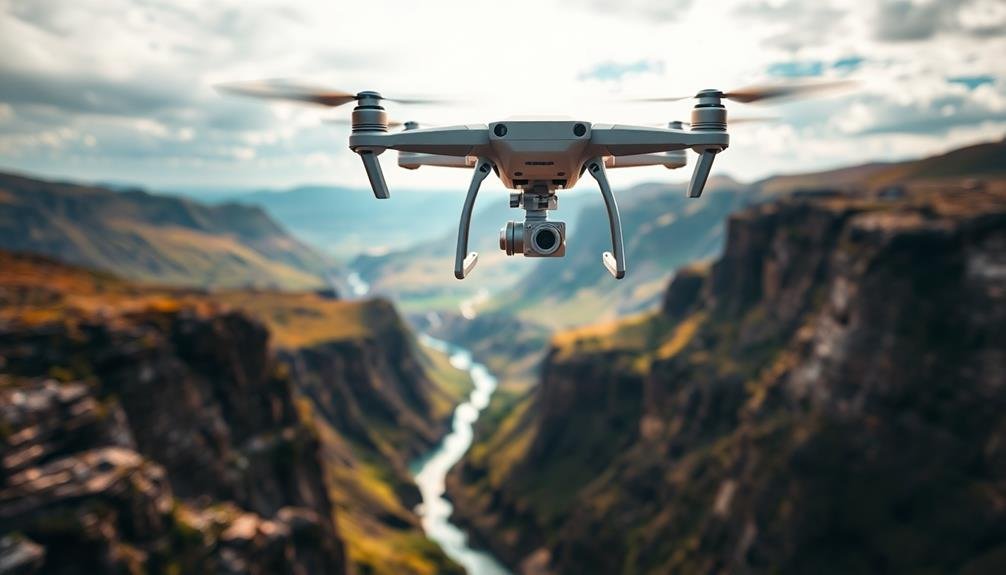



Leave a Reply